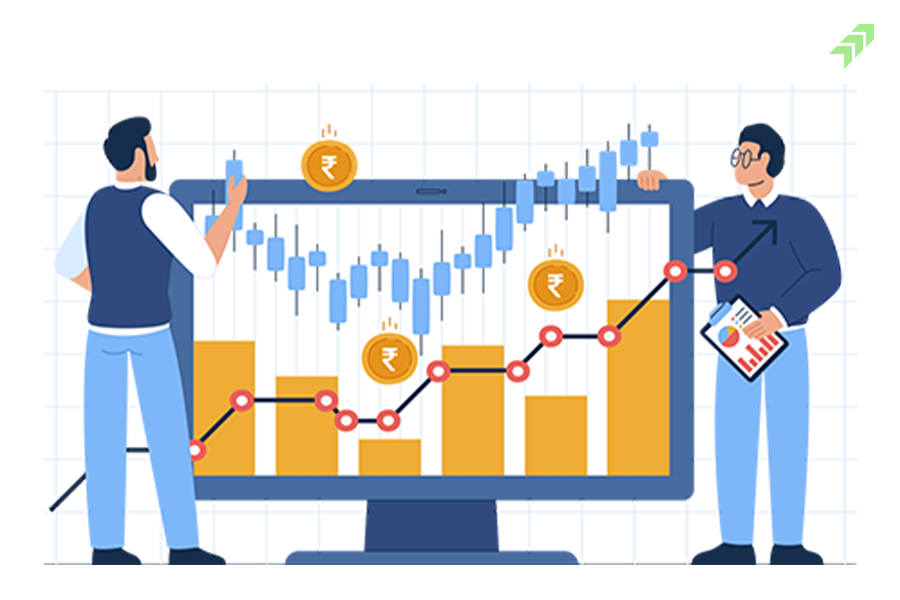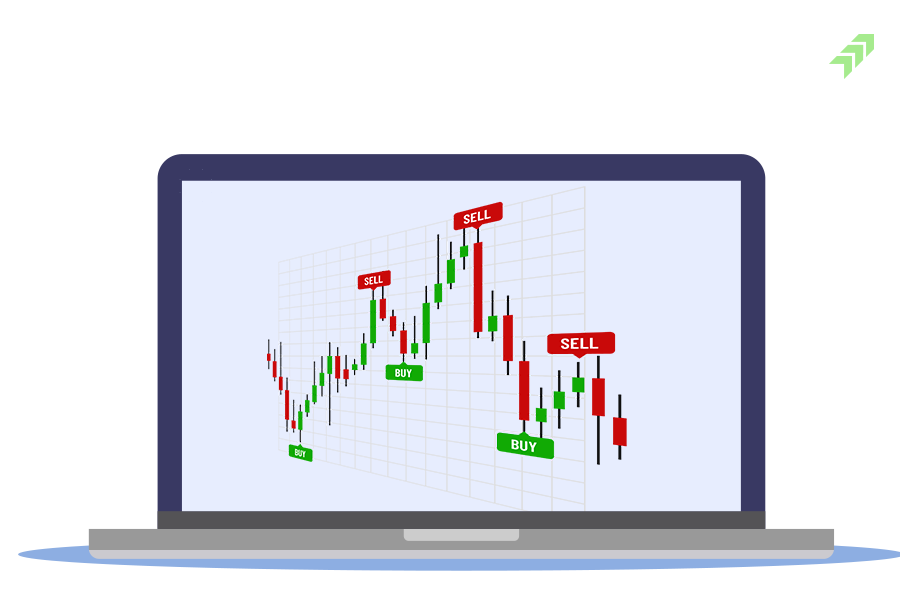Technical analysis and fundamental analysis both are an integral part of the stock market. Both are widely used by people to pick the stock either for short-term trading or long-term investment as per the applicability and feasibility of the user.
Both have their applicability and usefulness depending on the time horizon and risk-bearing capability of the investor. But which one is better? hence today here we will discuss the various aspects of fundamental analysis including their pros and cons, so that you can understand which one is better for what types of investment.
Fundamental and Technical Analysis Difference
Both are different from each other in terms of time horizon, investment approach, tools and techniques that are used to analyse the listed stocks.
In Fundamental Analysis Company's financial position is examined, while in technical analysis, the stock price movement is analyzed to predict the next move. In short - fundamental analysis is meant for long-term investment, while technical analysis is suitable for short-term trading. Let's find out which one is better comparing their pros and cons.
Also Read: Difference Between Fundamental Analysis and Technical Analysis
Advantages and Disadvantages of Fundamental Analysis
Everything has its advantages and disadvantages. Similarly, fundamental analysis and technical analysis also have benefits and drawbacks. Though, depending on the timing and right applicability of such things also make them how useful they are. However, let's find out what are the pros and cons of fundamental analysis and technical analysis.
Advantages of Fundamental Analysis:
Predict Long-term Trends: Fundamental analysis allows investors to forecast long-term trends allowing them to identify the best companies having the potential to grow in upcoming years and also give good returns to the investors.
Identify Strong Companies: Fundamental analysis helps to find out fundamentally sound companies. Using this method you can compare different companies in the same industry and evaluate their share price which one is available at a low price and which stock seems expensive as per the company’s financial strength and earnings.
A Solid Base for Investment: When select or buy the best company that is fundamentally strong and capable to grow in the future with low risk. Then it becomes one of the main reasons or solid base for the investment. In case the market goes down, there is less chance of falling down such stocks or they decline slowly compared to other weak stocks.
Disadvantages of Fundamental Analysis:
Not Suitable for Intraday: As the fundamental analysis helps to find out the intrinsic value of the company, it is meant for long-term investment. So it is not suitable for intraday trading, where stocks need to be picked at their momentum changes.
Data Unavailability: Another drawback of fundamental analysis, is you need the latest and most accurate financial data from reliable sources to analyse the financial statement of the company. And the availability of such data freely and accurately is not possible.
Also Read:How to Read Financial Documents
Financial Analytical Skills: This is another very crucial limitation of fundamental analysis. Yes, if you don’t have the educational background or knowledge and experience of interpreting the financial statement or valuation ratios to find out the intrinsic value of the stock. Then it would be not possible to perform the fundamental analysis without such skills.
Time-Taking Process: Last but not least, this is another disadvantage of the fundamental analysis. Performing the fundamental analysis is the time taking and tedious process, you need time to gather the last 3 to 5 years of financial data and then analyze the same to check the financial performance of the company. Finally, you need to calculate the financial and evaluation ratios and then compare the stock with the peer group to decide which stock is worth buying.
Advantages and Disadvantages of Technical Analysis
Just like fundamental analysis, technical analysis also has its disadvantages in terms of risk-bearing capability, time horizon and other aspects. As we already know technical analysis is mainly performed especially for intraday trading or short-term trading. Hence, it cannot be used for long-term investment, so let's find what its other limitations are.
Also Read: What is Intraday Trading: Is it Profitable, How to Learn& Earn Money
Advantages of Technical Analysis:
Short-term Trading: Technical analysis is best suitable for picking the stocks for short-term trading, like intraday or few days. As the indicators help to know the momentum of the stock and the right time to buy and sell to book profit or exit from the stock.
Les Time Required: Compared to fundamental analysis, technical analysis needs less time for analysis. As everything is performed with the help of tools and software on a computer, and once indicators are applied the stock movement can be predicted.
Market Trend: The best part of technical analysis is, that it helps to know the market trend or individual stocks trend. Using the tools and indicators you can find out the whether it is bullish, bearish, range-bound or going to break out or break down in the near term.
Versatile Technique: The best part of technical analysis is it can be applied to any financial instrument trading in the market daily. Yes, the tools, techniques and indicators all can be used on candlestick charts of any instrument including equity, commodity, currency and cryptocurrency that are traded in the marketplace for buying and selling.
Disadvantages of Technical Analysis:
Tools & Software: As we already told you technical analysis can be performed only with the help of advanced tools and software, and that is not available easily or freely. And to draw these tools you also need accurate price data of stock so that you can apply all tools. And for intraday trading, you need a real-time charts with a quick refresh rate to take the right action.
Skills & Knowledge: Without knowledge of technical indicators, how to apply them and how to correlate with the market or interpret the data on the chart, it is not possible to perform the technical analysis. And if you don't have such knowledge and experience, you cannot use the tools and techniques used while performing the technical analysis.
Possibility of Wrong Interpretation: This is one of the very common limitations of technical analysis. As most traders oscillate use different approaches and sometimes become confused or fail to predict accurately which can cost them losses.
Ineffective on External Factors: Technical analysis would not apply to various external factors like geopolitics and unexpected economic conditions and sudden calamities. You can use the technical indicators and tools if the price movement of stock has consistently performed as per the market conditions and the company's fundamental positions.
Fundamental vs Technical Analysis, Which is Better?
The million-dollar question now comes, which one is better – fundamental analysis or technical analysis? I think after discussing various aspects of both you got to know, which one is suitable for trading and which is suitable or mainly used for investing.
Fundamental analysis is performed to evaluate the intrinsic value of the stock price of the company using the financial conditions and company-related other fundamental factors. However, in technical analysis stock price movement is analyzed to predict the next move of the stock using the various technical indicators and tools.
Fundamental Analysis is Suitable for Long-term Investments
Fundamental analysis is used by long-term investors who are looking for stocks that are fundamentally strong and grow along with the growth of the company. Under this methodology, every aspect of the company affecting its performance fundamentally is analyzed before investing in the stocks.
Fundamental analysis helps investors to find out the financial position of the company, how it is earning its revenue, and operating and profit margins. This also allows users to evaluate the various ratios to know the company's capability and its valuation ratios. Based on these parameters you can pick the best company and invest for long-term returns from the equity.
Technical Analysis is Suitable for Intraday or Short-term Trading
Intraday traders, or who used to trade for short-term or buy stocks from the F&O (derivatives segments) for a few days or weeks use the technical analysis tools and techniques. This helps them to find if there is momentum in any stock or having the potential to rise or fall, so that they can make the short-term position and book profit when the target is achieved.
Also Read:How to Do Intraday Trading: Best Stocks, Charts & Strategies
Along with the momentum or breakout & breakdown movement in stocks, technical analysis also helps to know the entry and exit point of any stock. Looking at support or resistance and moving averages, traders buy or sell the stocks, put stop loss and book profits or exit timely to minimize their losses if the stock moves against their expectations.
Using Combination of Both - Icing on the Cake
From the above discussion, it's very clear that fundamental analysis is primarily used for buying the stock for long-term investment, and technical analysis is used to pick the stock for short-term or day trading. However, long-term investors along with fundamental analysis also use technical analysis to know the right levels of buying the stock.
Similarly, many traders also use fundamental analysis to find stocks for trading that are fundamentally sound. And the combination of both – fundamental and technical analysis helps to take the right decisions and pick the best stocks that are fundamentally good and currently available at low levels that you can buy to earn profits in the near term.
Moneysukh provides stock recommendations on the basis of both – fundamental analysis and technical analysis. Open the demat account here and enjoy trading as well as investing in the stock market with the best intraday tips and long-term investment stocks.
Also Read:How to Select Stocks for Intraday: 10 Tips to Pic Best Stocks
Here we use the combination of both to identify the best stocks having the maximum potential in the minimum time horizon with the lowest risk. Trading or investing with us you will grow your wealth and create the best portfolio in the stock market.




















No comment yet, add your voice below!